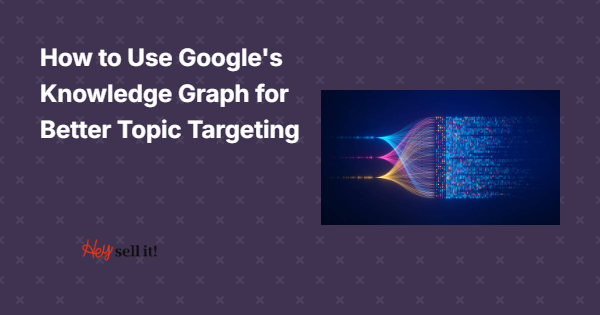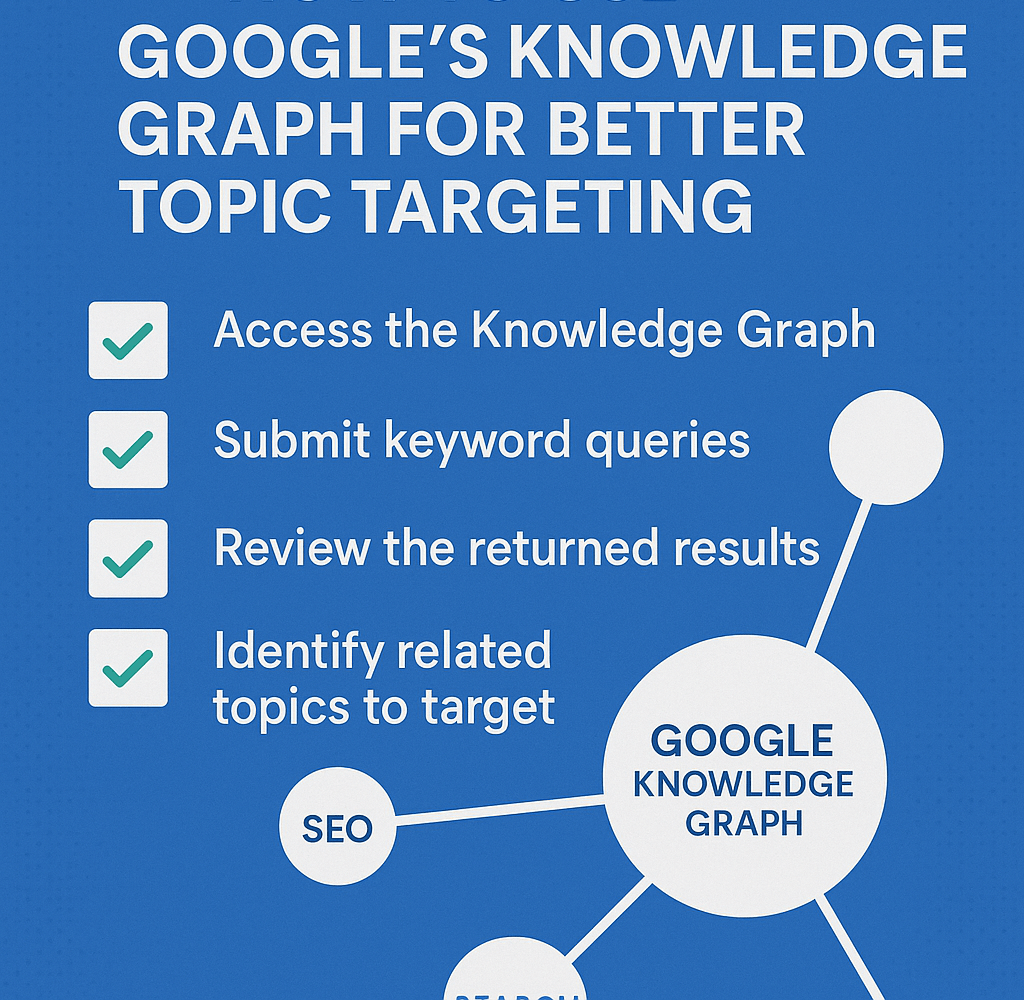Abdullah Usman
You search for “best running shoes” and Google instantly shows you a carousel of top brands, customer reviews, nearby stores, and even price comparisons—all without clicking a single link. That’s Google’s Knowledge Graph at work, and if you’re not leveraging it for your business, you’re missing out on massive SEO opportunities.
As someone who’s spent 8 years helping businesses dominate search results through professional SEO services, I’ve witnessed firsthand how the Knowledge Graph has revolutionized the way Google understands and serves content. This isn’t just another algorithm update—it’s a fundamental shift toward semantic SEO that smart business owners are using to outrank their competitors.
Whether you’re running an e-commerce store, managing a local business, or building your personal brand as an influencer, understanding how Google’s Knowledge Graph works can transform your content strategy and search visibility. Let’s dive into the practical strategies that will help you tap into this powerful system.
What Exactly Is Google’s Knowledge Graph and Why Should You Care?
Google’s Knowledge Graph is essentially the search giant’s massive database of interconnected facts about people, places, and things. Launched in 2012, it now contains over 500 billion facts about 5 billion entities. Think of it as Google’s brain that helps the search engine understand relationships between different concepts, rather than just matching keywords.
Here’s why this matters for your business: When Google understands your content’s context and relationships, it can serve your information directly in search results through featured snippets, knowledge panels, and rich results. This means more visibility without users even clicking through to your website—but paradoxically, it often leads to higher quality traffic when they do click.
For e-commerce businesses, this is game-changing. Instead of competing solely on generic product keywords, you can target topical clusters that establish your authority in specific niches. A Shopify store selling fitness equipment, for example, can create content that positions them as experts in home workouts, muscle building, and fitness equipment reviews—all interconnected topics that Google’s Knowledge Graph recognizes as related.
How Does Google’s Knowledge Graph Actually Impact Your Search Rankings?
The Knowledge Graph doesn’t directly influence rankings, but it fundamentally changes how Google interprets and categorizes your content. When your website consistently covers related topics within a specific domain, Google begins to recognize you as a topical authority.
Research from SEMrush shows that websites covering comprehensive topic clusters see 47% more organic traffic than those focusing on isolated keywords. This happens because Google’s algorithm now evaluates content based on topical relevance and entity relationships, not just keyword density.
Consider how this works in practice: If you’re offering local SEO services in Chicago, creating content about Google My Business optimization, local citation building, and Chicago-specific business directories signals to Google that you’re an authority on local search marketing in that geographic area. The Knowledge Graph connects these related concepts, boosting your chances of ranking for the entire topic cluster.
Your on-page SEO strategy should reflect this understanding. Instead of stuffing keywords, focus on naturally incorporating related terms and concepts that Google’s Knowledge Graph recognizes as connected. This approach not only improves rankings but also creates more comprehensive, valuable content for your audience.
Which Types of Businesses Benefit Most from Knowledge Graph Optimization?
Local businesses experience perhaps the most dramatic benefits from Knowledge Graph optimization. When Google understands your business’s relationship to your location, services, and industry, you’re more likely to appear in local pack results and knowledge panels.
E-commerce stores, particularly those in competitive niches, can leverage the Knowledge Graph to differentiate themselves through comprehensive product and category coverage. Instead of competing head-to-head on “wireless headphones,” an e-commerce SEO strategy might target the broader topic cluster including “audio quality,” “noise cancellation technology,” “workout headphones,” and “headphone maintenance.”
Service-based businesses and consultants benefit by establishing topical authority in their expertise areas. A digital marketing consultant who consistently creates content about SEO audits, conversion optimization, and analytics will signal to Google’s Knowledge Graph that they’re a comprehensive resource in digital marketing—not just someone who occasionally writes about it.
Influencers and content creators can use Knowledge Graph principles to build authority in their niches. By consistently covering interconnected topics within their area of expertise, they signal to Google that they’re legitimate authorities worthy of featured snippets and knowledge panel mentions.
What Are the Key Elements Google’s Knowledge Graph Considers?
Entity relationships form the foundation of how Google’s Knowledge Graph operates. These are the connections between people, places, businesses, concepts, and events that Google recognizes as related. When planning your content strategy, think about how your business, products, or services connect to broader industry concepts.
Structured data markup serves as a direct line of communication with Google’s Knowledge Graph. Schema markup helps Google understand exactly what your content is about and how it relates to other entities. Implementing proper schema can increase your chances of appearing in rich results by 30%, according to recent industry studies.
Content depth and comprehensiveness signal topical authority to the Knowledge Graph. Surface-level articles that briefly touch on topics won’t establish the entity relationships Google looks for. Instead, create comprehensive resources that thoroughly explore subjects and naturally link to related concepts.
Geographic and industry context plays a crucial role, especially for local SEO strategies. Google’s Knowledge Graph understands that a pizza restaurant in Brooklyn has different relevance signals than one in Portland, and your content should reflect these geographic relationships.
How Can You Identify the Right Topic Clusters for Your Business?
Start with your core business offerings and map out naturally related concepts. If you provide ecommerce SEO services, related topics might include product page optimization, site speed for online stores, mobile commerce trends, and conversion rate optimization. These aren’t just related keywords—they’re concepts that Google’s Knowledge Graph recognizes as interconnected.
Use tools like Google’s “People Also Ask” feature and related searches to identify entity relationships Google already recognizes. When you search for your main business topic, note what related questions and searches Google suggests. These represent established connections in the Knowledge Graph.
Analyze your competitors’ content clusters to identify gaps in your topical coverage. Look for related topics they’re covering that you haven’t addressed, but avoid direct copying. Instead, find unique angles or deeper dives into these related concepts.
Consider your customers’ journey and the questions they ask at different stages. A comprehensive topic cluster should address awareness-stage questions, consideration-stage comparisons, and decision-stage concerns. This comprehensive coverage strengthens your topical authority signals to Google’s Knowledge Graph.
What’s the Step-by-Step Process for Implementing Knowledge Graph Optimization?
Action Point 1: Conduct a comprehensive SEO audit of your current content to identify existing topic clusters and gaps. Map out what topics you’re already covering and identify missing connections that could strengthen your topical authority.
Action Point 2: Research and document the entity relationships relevant to your industry. Create a visual map showing how your business, products, or services connect to broader industry concepts, related services, and geographic considerations.
Action Point 3: Implement structured data markup across your website, starting with the most important pages. Focus on Organization, Product, Service, and LocalBusiness schema types depending on your business model. Test your markup using Google’s Rich Results Test tool.
Action Point 4: Create a content calendar that systematically covers your identified topic clusters. Plan comprehensive pieces that thoroughly explore each topic while naturally linking to related concepts. Aim for depth over breadth in your coverage.
Action Point 5: Optimize your existing content to better reflect entity relationships. Add internal links between related topics, update meta descriptions to include related terms, and ensure your content comprehensively covers its subject matter.
Action Point 6: Monitor your knowledge panel and featured snippet appearances using tools like SEMrush or Ahrefs. Track which topics are generating rich results and double down on successful patterns.
How Do You Measure Success with Knowledge Graph Optimization?
Featured snippet captures serve as a primary indicator that Google’s Knowledge Graph recognizes your topical authority. Track how many featured snippets you’re capturing and for which topic clusters. Businesses that systematically target Knowledge Graph optimization typically see 15-25% increases in featured snippet appearances within 6 months.
Organic traffic growth from long-tail, topic-related keywords indicates that Google is associating your website with broader topic clusters. Monitor traffic increases for terms you didn’t directly target but that relate to your core topics.
Knowledge panel appearances and brand entity recognition represent advanced Knowledge Graph success. When Google begins showing knowledge panels for your business or mentioning your brand in related searches, you’ve achieved significant entity recognition.
Search impression increases across topic clusters, even without ranking improvements, suggest that Google is showing your content for a broader range of related queries. This expanded visibility often precedes ranking improvements.
What Common Mistakes Should You Avoid When Targeting the Knowledge Graph?
Many businesses make the mistake of creating thin content across too many topics instead of developing comprehensive authority in focused areas. Google’s Knowledge Graph rewards depth and expertise over superficial coverage of numerous unrelated topics.
Neglecting local entity relationships costs local businesses significant opportunities. Your local SEO strategy should emphasize connections to your geographic area, local industry associations, and community relationships that Google’s Knowledge Graph can recognize.
Over-optimizing structured data or implementing it incorrectly can actually harm your Knowledge Graph potential. Focus on accurate, helpful markup that genuinely describes your content rather than trying to game the system.
Ignoring user intent and entity relationships in favor of keyword stuffing represents outdated SEO thinking. Modern Shopify SEO and ecommerce optimization require understanding how products and categories relate to customer needs and industry concepts.
Why Is This Strategy Becoming More Critical for Future SEO Success?
Google’s continued investment in AI and machine learning makes entity understanding increasingly sophisticated. The Knowledge Graph isn’t static—it’s constantly evolving to better understand relationships between concepts, making topical authority more important than ever.
Voice search and conversational queries rely heavily on Knowledge Graph data to provide accurate answers. As voice search continues growing, businesses with strong entity relationships will dominate these results.
Mobile-first indexing and local search improvements heavily leverage Knowledge Graph data to serve relevant results. Your mobile SEO strategy should account for how entity relationships affect local and mobile search visibility.
The future of search is moving toward zero-click results and direct answers, making Knowledge Graph optimization essential for maintaining search visibility even when users don’t click through to your website.
Google’s Knowledge Graph represents a fundamental shift in how search engines understand and serve content. By focusing on comprehensive topic coverage, entity relationships, and structured data implementation, you can position your business as a recognized authority in your industry. The businesses that embrace this approach now will have significant advantages as Google’s entity understanding becomes even more sophisticated.
Remember, this isn’t about gaming the system—it’s about creating genuinely comprehensive, helpful content that serves your audience while signaling your expertise to search engines. Start with one core topic cluster, implement these strategies systematically, and watch as Google begins recognizing your business as an authority worth featuring in search results.


